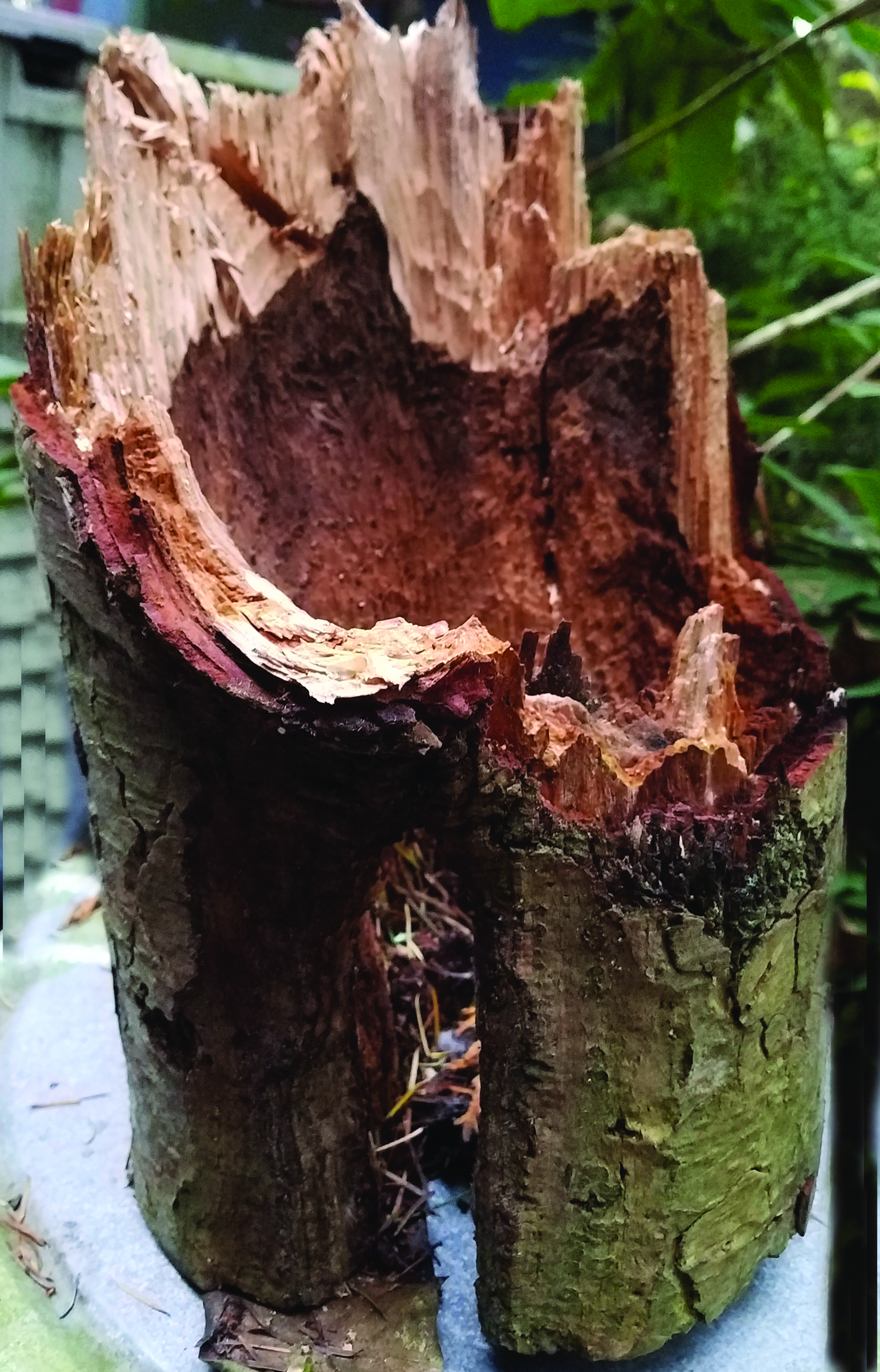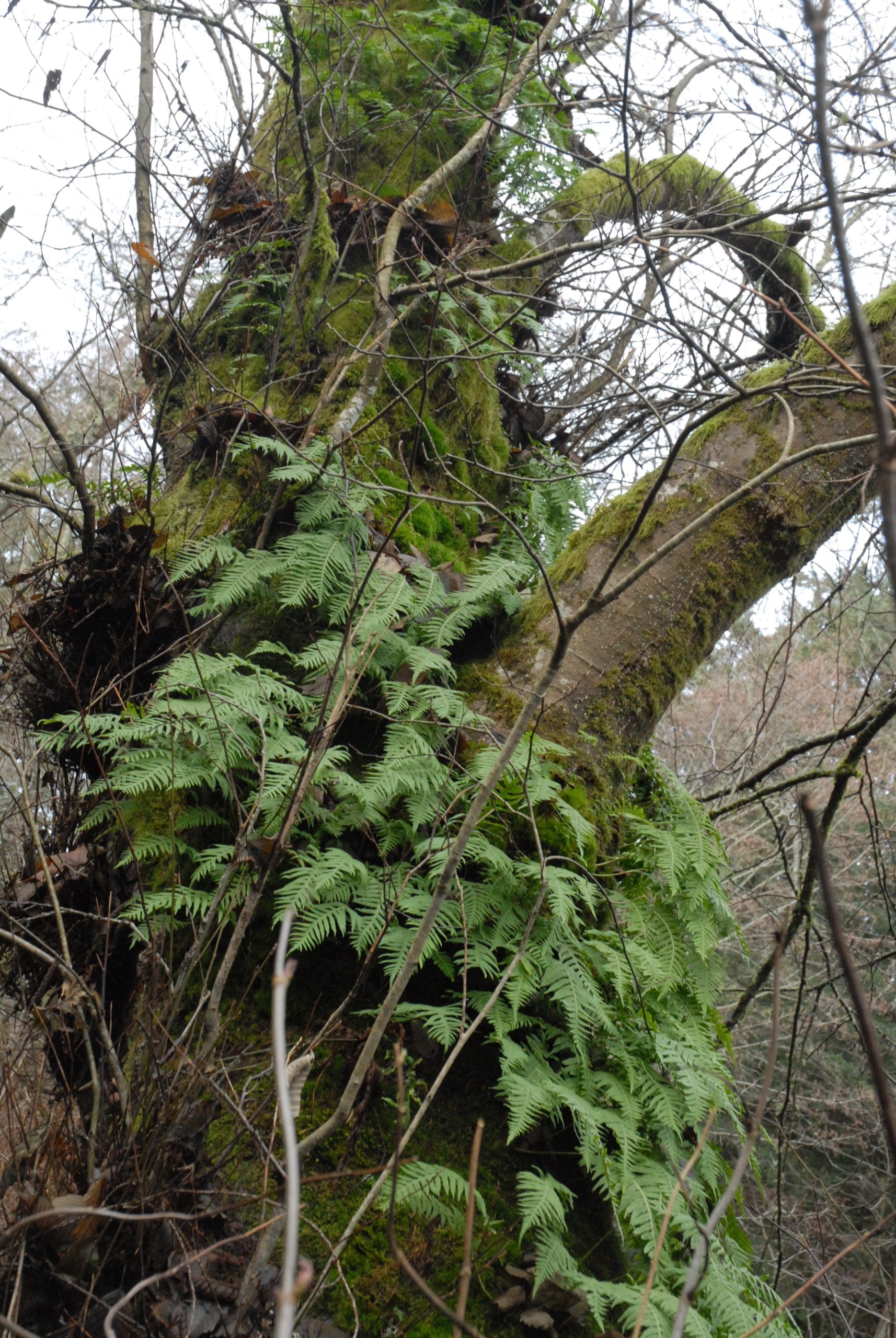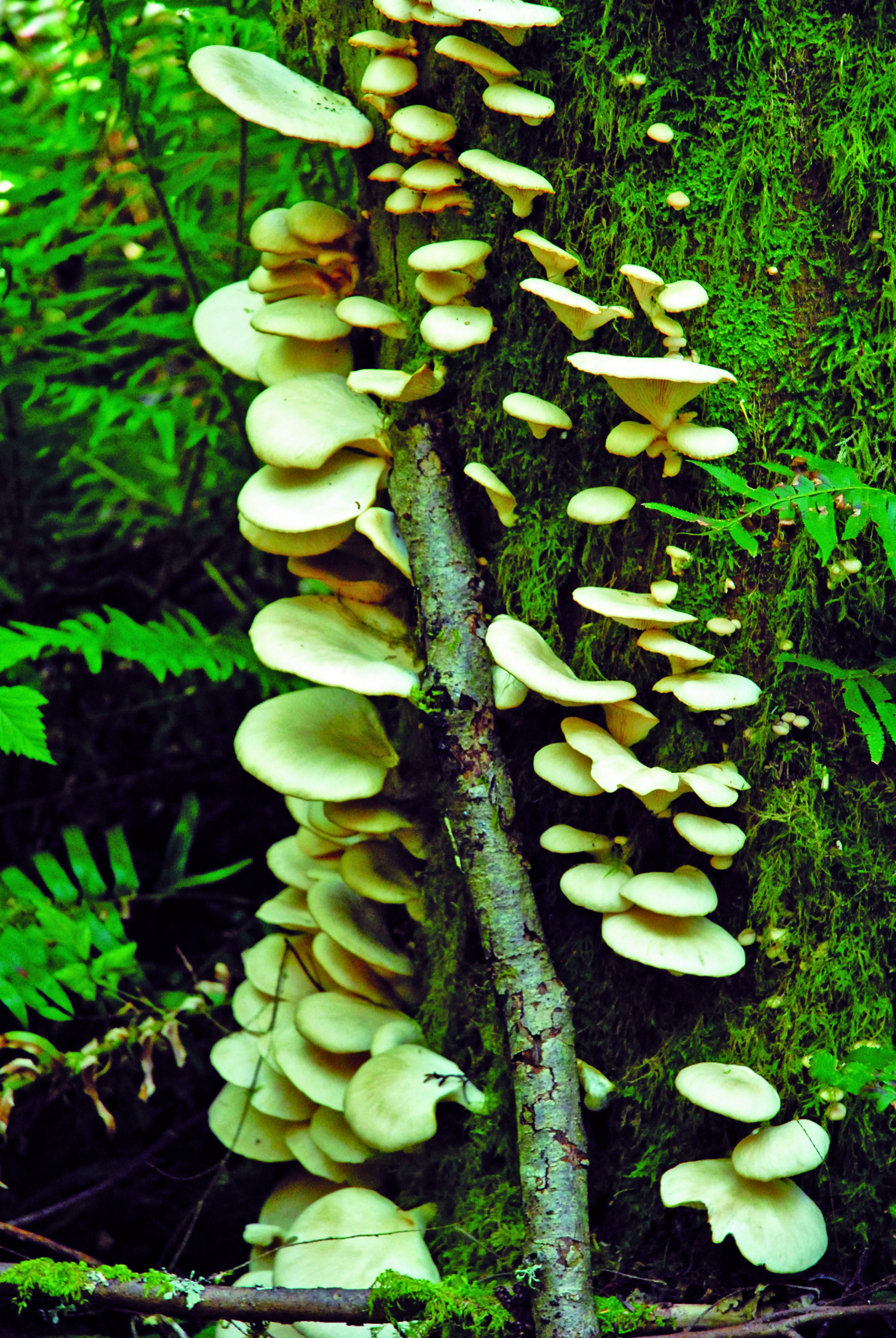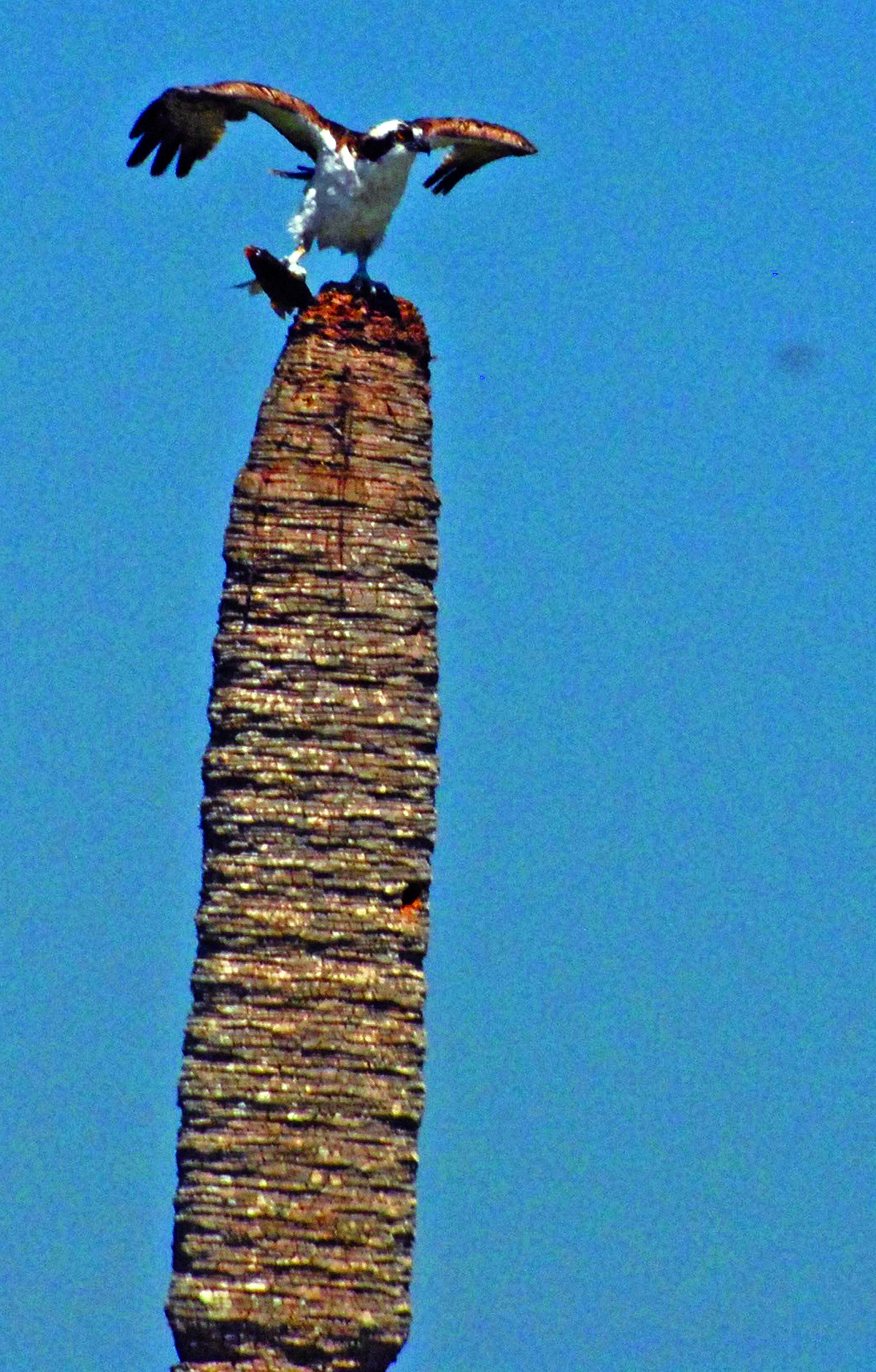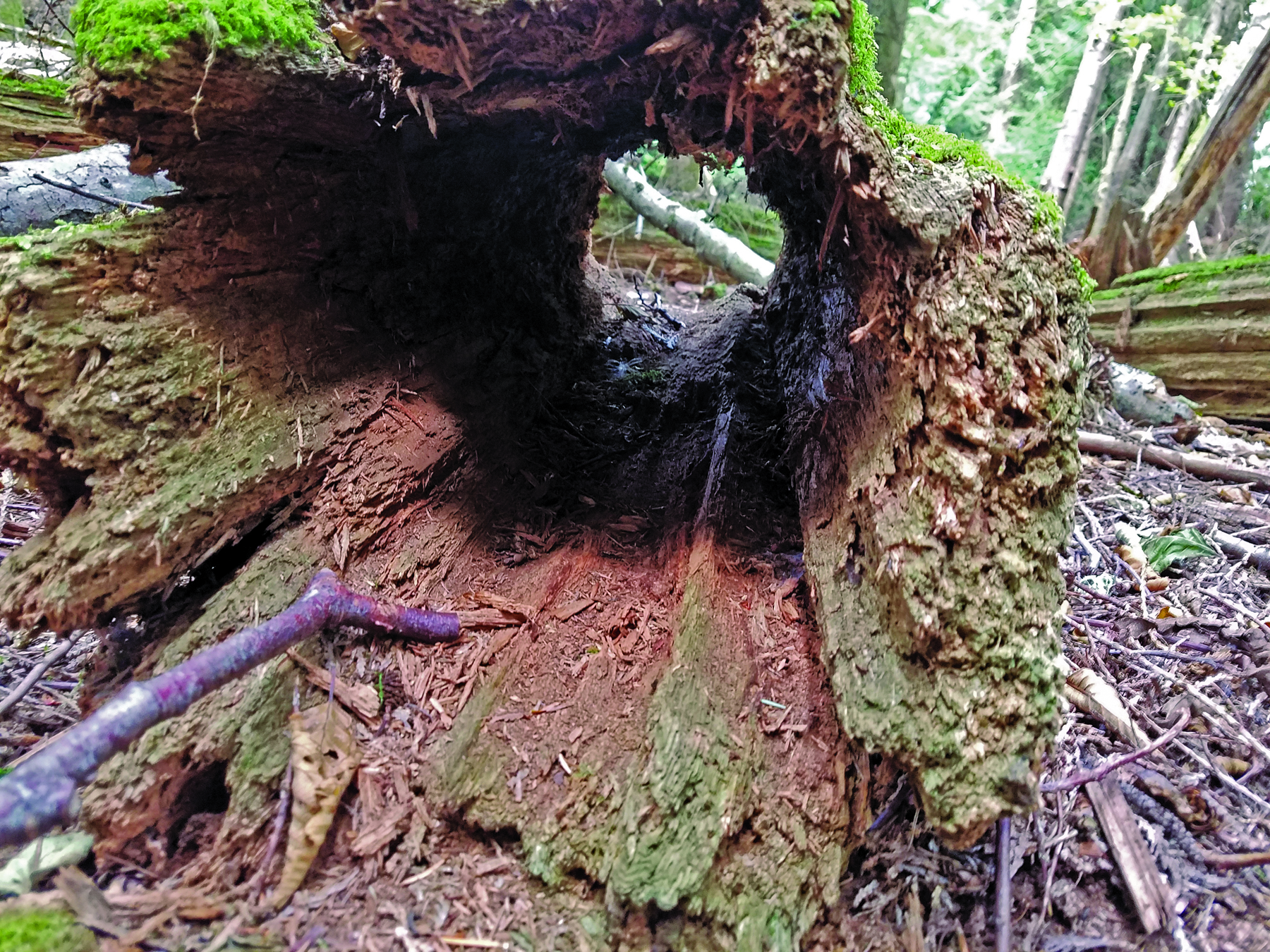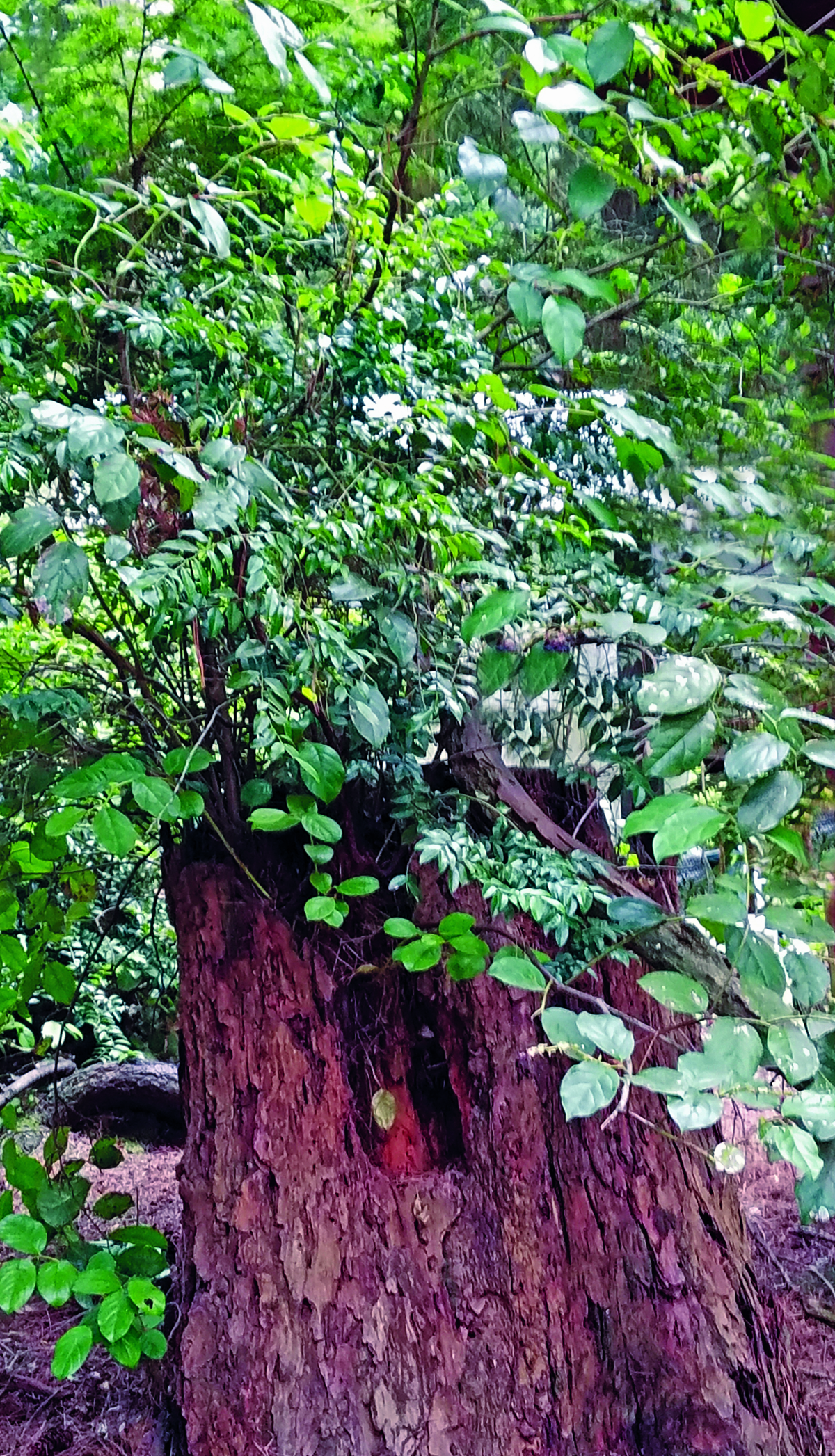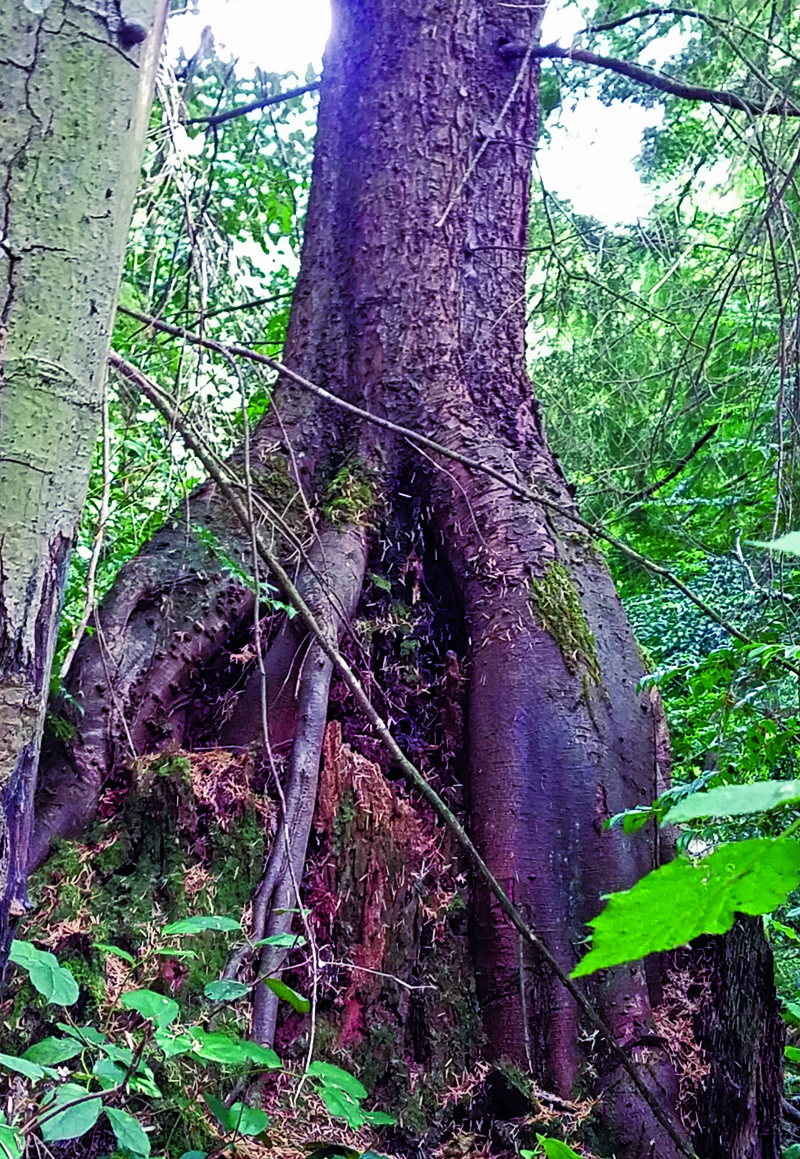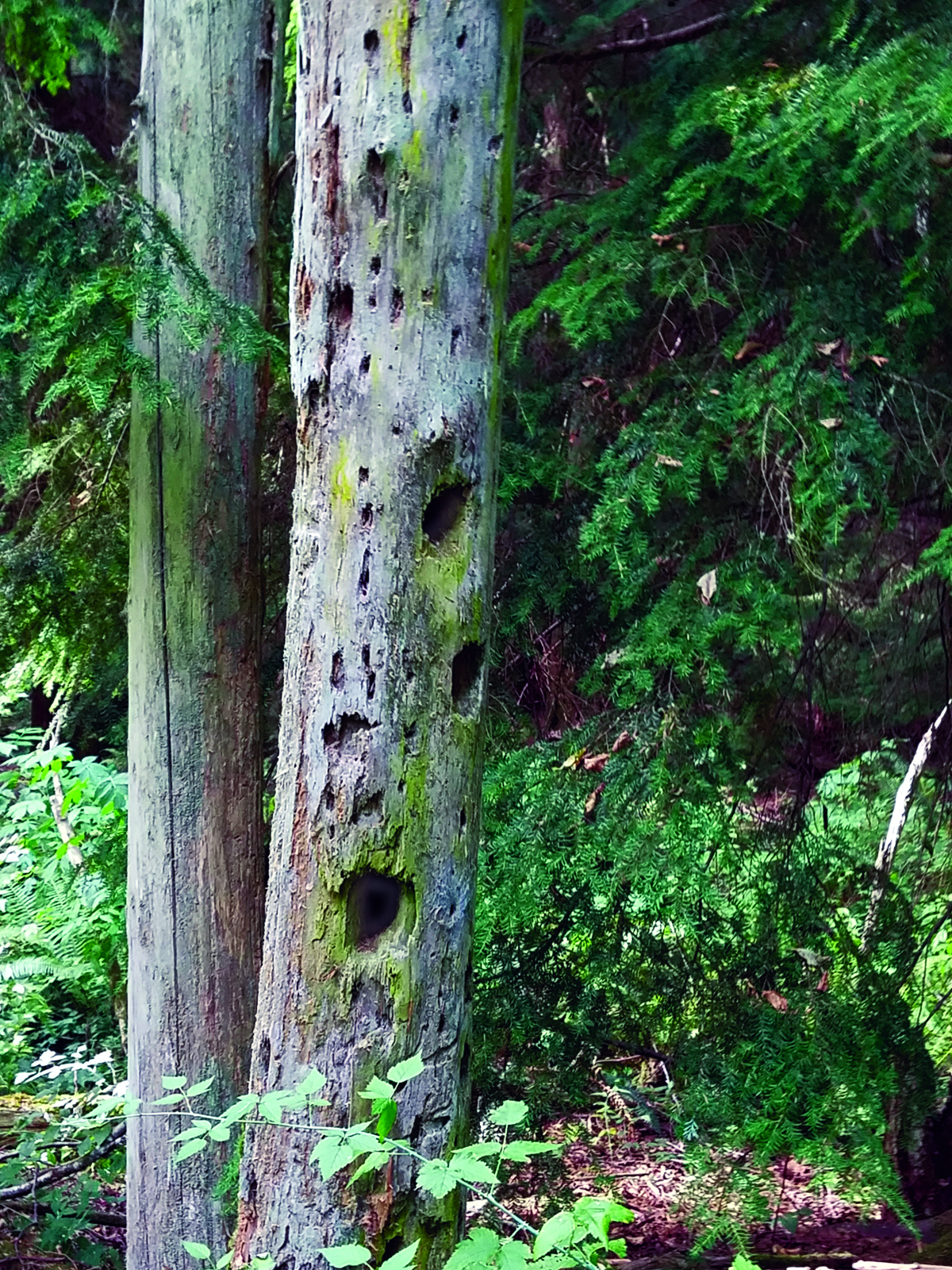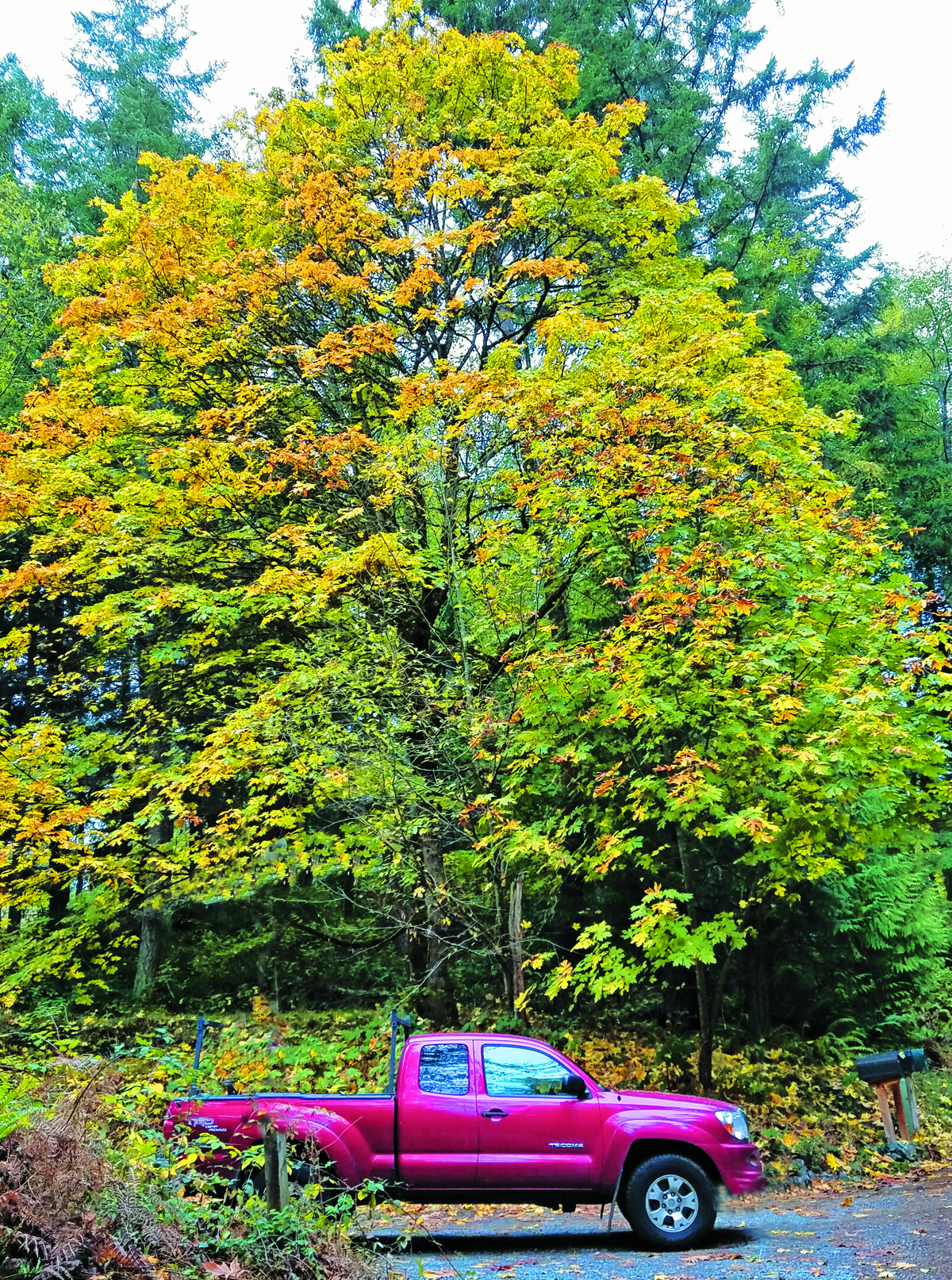
“The best time to plant a tree was 20 years ago. The second best time is now.”
― Chinese proverb
Big Leaf Maple-Photo by Marian Blue
To plant a tree in the 21st century is to think in more complicated ways than in the past if you consider today’s conservation needs. Providing for wildlife and planting for future climate changes are considerations, along with concerns people have always had: beauty, shade, and other value.
Planning for wildlife has become increasingly important as pollinators (such as bees and butterflies) are on the decline. Yet we often think in terms of flowers or shrubs only. Pollinators also rely on trees. Trees provide shelter, food, and nesting sites for birds, bats, raccoons, frogs, and more.
When you plant a tree, you’re creating a substantial resource for decades, maybe centuries.
To Plant a Tree
Step One
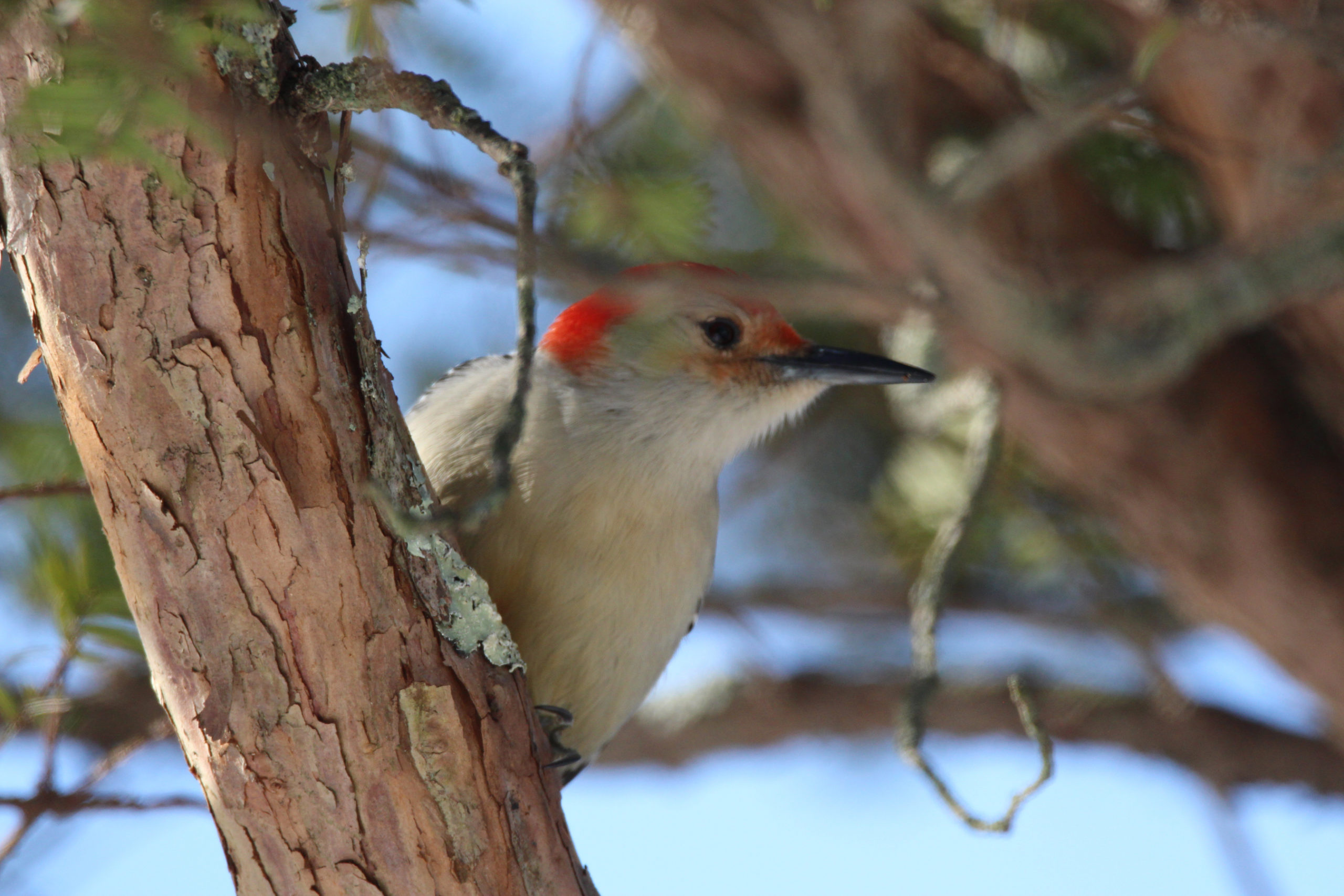
Red-bellied woodpeckers love trees and the food they host. Photo by Cherie Ude
The first step in planning is to consider your site, both geographically and in details. What seed zone are you in and how is climate change apt to affect that? The forest service has a mapping tool for considering both these issues: USDA Seed Zone Applications. If you want something less complex, many nurseries and other organizations provide seed zone maps online or in their garden centers. If you’re thinking in terms of climate change, don’t make significant changes–move south one or two hundred miles and go for that seed zone.
When you know your seed zone it’s easy to find out what trees are recommended for your area. Local conservation districts are a good source (as well as nurseries). My local conservation district provides information, resources, and an annual plant sale: Whidbey Island Conservation District. Because it’s local, the plants are already selected for the area. Note that for pollinators, the trees Madrone, Big Leaf Maple, Black Hawthorne, and others are included. Sometimes species that provide important resources for wildlife might surprise you.
Some northwest recommended wildlife trees are included at National Wildlife Federation Ten Favorite Trees for Wildllife
Step Two
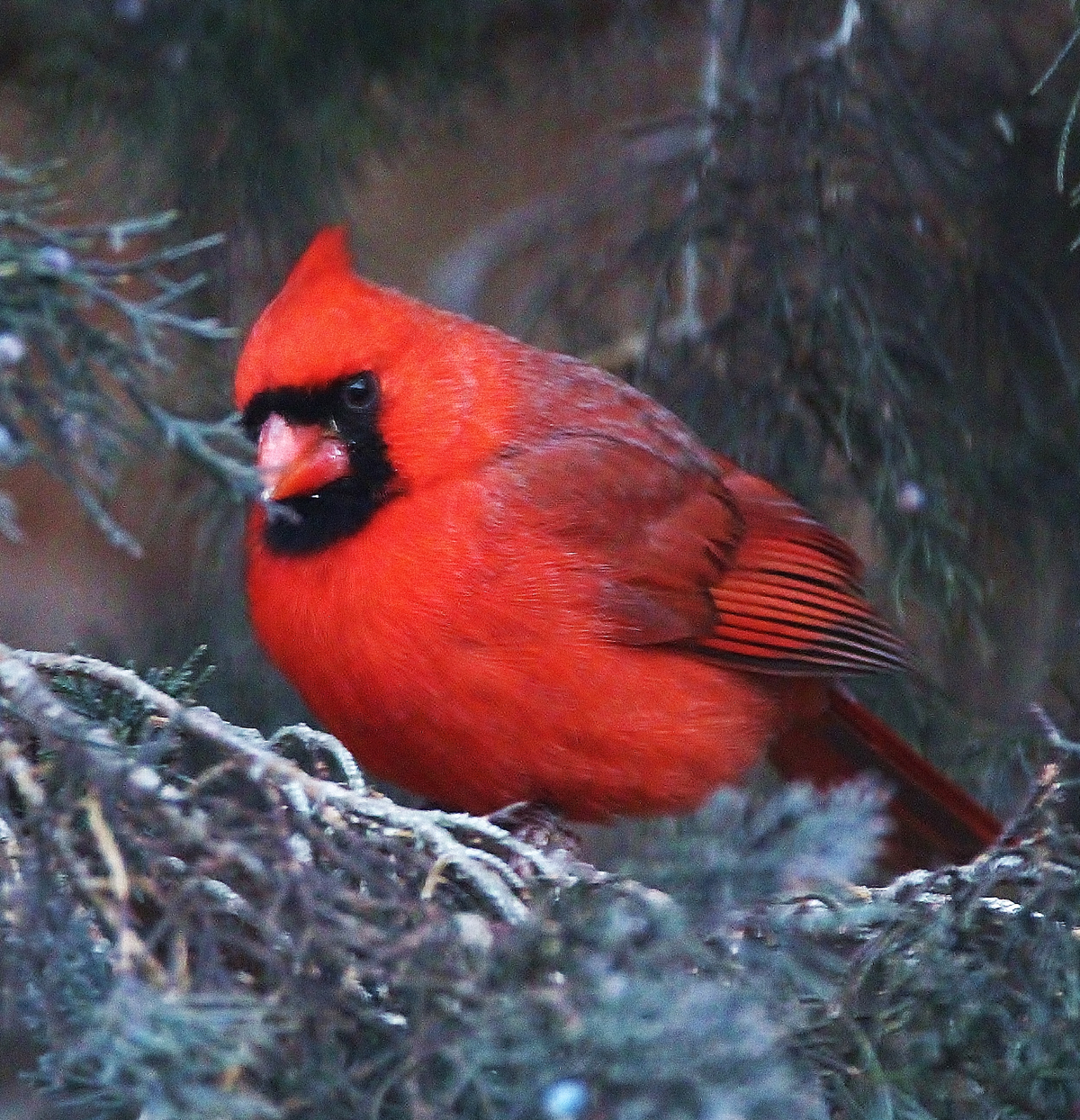
The northern cardinal brings flashes of brilliance.
Photo by Cherie Ude
Consider your specific site and personal goals. Even sites in the same area can vary radically.
Space–how much open area do you have? Does it suit the future size of the tree you’re considering?
Location—will roots be too close to septic tanks, power lines, or house foundations? Will spreading branches overshadow gardens that need light? Will the tree eventually be tall enough to threaten buildings from falling branches or the tree itself? Also keep in mind that different towns have different rules about trees; some neighborhood associations are particularly restrictive. Even if no restrictions are enforced, consider how your tree will affect your neighbors.
Light—Shade is lovely, almost as effective as AC, but will the tree eventually block a view or windows? Also, how much light is available for the tree? Some trees are shade tolerant…some are not.
Drainage—What kind of soil do you have? More clay means slower drainage whereas sandy loam will drain well. Also, is the tree in a low wet spot? A high, dry spot? You can dig a hole, fill it with water, and see how quickly it drains to get an idea of drainage. You might want to also evaluate the pH values of the soil.
Future plans and goals—If you’re thinking of enlarging your home or putting in gardens or selling in the near future, consider how the tree fits into those plans. Do you want the tree to be a legacy tree, a place for a tree house, a graceful setting for family gatherings or lounging in a hammock? Are you thinking long-term?
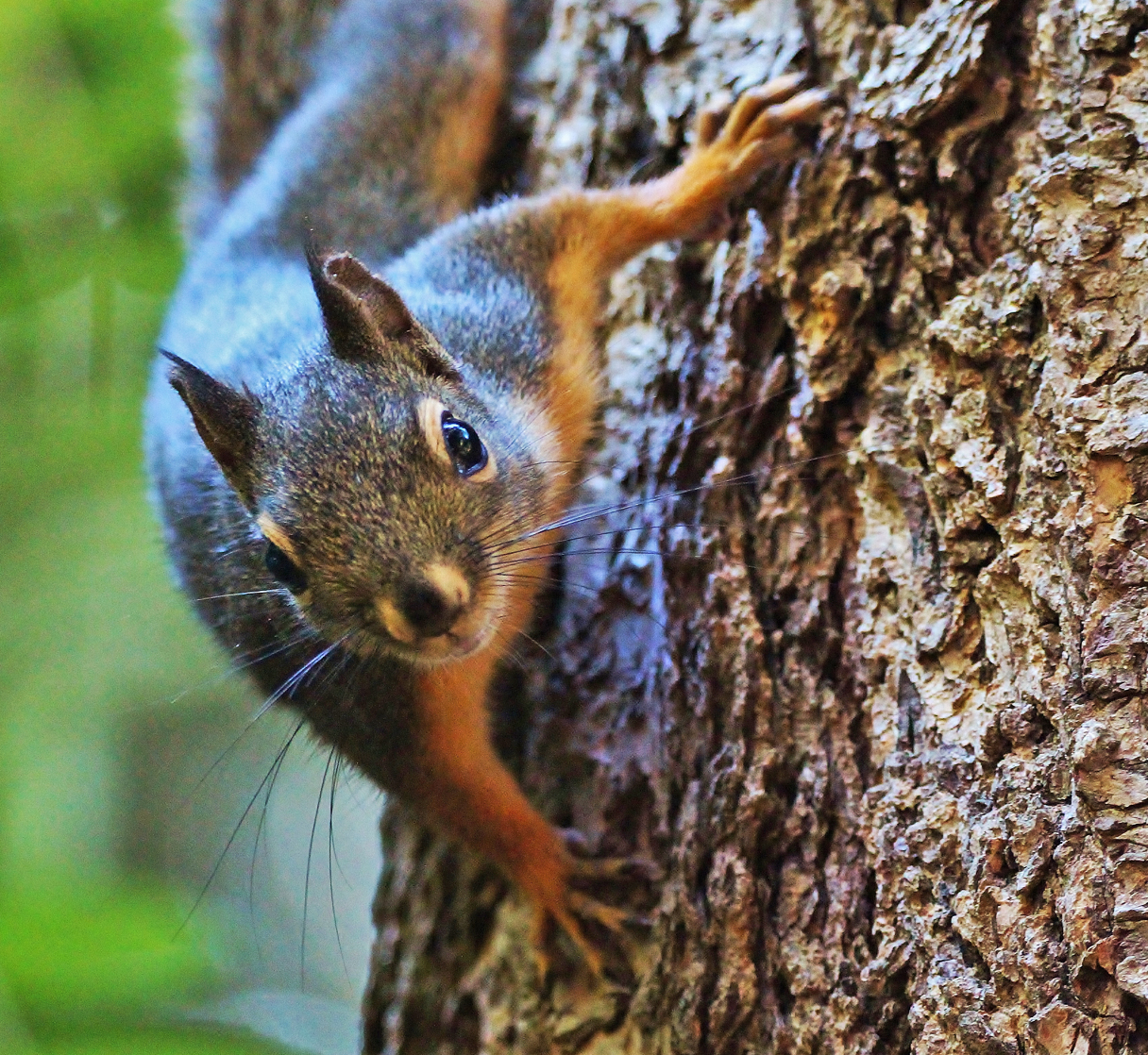
Douglas Squirrels cone-bearing trees, favoring those such as Douglas fir.
Photo by Cherie Ude
Pests–Will this tree lure in unwelcome guests? Consider what sort of insects and animals are apt to arrive as the tree becomes more inviting; this will vary with geography. Some people, for instance, want squirrels, raccoons and/or opossums; some don’t.
Purpose of tree–Perhaps you want something that provides color changes through the year or maybe an evergreen that keeps its foliage. Maybe you want to harvest fruit or berries. Maybe you want to plant memories. To this day, I remember the weeping willow that filled my aunt and uncle’s front yard. We played hide and seek among its branches that swept the lawn, and we could swing from those same branches.
Step Three
Planting a tree should be a thought-out process. Depth and width of hole, root conditions of sapling, etc. Remember that this is a future fulfillment. This Seattle government site has a ton of good information about planting: Planting and Care of Trees

Deer and rabbits can be hazardous to young trees.
Photo by Cherie Ude
Protect the tree after planting. Rabbits and deer are particularly hard on young trees. Deer can damage or even kill older trees by rubbing their antlers on trunks and foliage to remove velvet. Many products are available, from fencing to repellents, to help with this. Humanely Protecting Young Trees and Shrubs provides some quick tips on ways to protect your plants.
***
Every day we’re learning more about trees and their roles in our world. A delightful Webinar about how trees communicate and bond with each other and with us is at Daily Dose of Nature Webinars.
When you’re planting a tree, you’re making a statement about the future and how you want it shaped. Remember, trees are valuable even after they die; see Snags . Consider getting the whole family involved in the process.
“On the last day of the world I would want to plant a tree.”
― W.S. Merwin
Next month’s blog “Invaders!”


